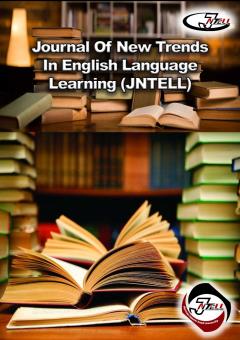The Portrayal of Information Structure in Persian Spoken Genres
محورهای موضوعی : Applied Linguistics
Bahram Hadian
1
![]() ,
Fatemeh Aghaei
2
,
Vali Rezaei
3
,
Fatemeh Aghaei
2
,
Vali Rezaei
3
![]()
1 - 2Assistant Professor, Department of English, Isfahan (Khorasgan) Branch, Islamic Azad
University, Isfahan, Iran
2 - 1Ph.D. Candidate, Department of English, Isfahan (Khorasgan) Branch, Islamic Azad University,
Isfahan, Iran
3 - Associate Professor, Department of Linguistics, University of Isfahan, Isfahan, Iran
کلید واژه: Pseudo-clefting, genres, Syntactic devices, Clefting, information structure, Preposing, passive,
چکیده مقاله :
Insufficient scholarly inquiry exists regarding the function of genres and their pertinent discourse characteristics within the realm of Information Structure and its syntactic renderings in the Persian language. The present study, which is descriptive and corpus-based in nature, is designed to analyze three distinct genres of the Persian language – specifically, political discourse, scientific discourse, and everyday conversation. The study aims to investigate the Information Structure present in these genres, as expressed through four key syntactic devices: clefting, pseudoclefting, passive voice, and preposing. In order to achieve the intended objective, one thousand distinct verbal expressions concerning each of the aforementioned genres were obtained from the multi-media database of the IRNA (Iranian News Agency) website and everyday dialogues amongst acquaintances and family members of the researchers, utilizing Lambrecht's theoretical framework for constructing the Information Structure. Following data collection, transcription was carried out and various syntactic devices were identified. Subsequently, descriptive statistics were utilized to analyze and understand the representation of these syntactic devices across different genre types. The findings indicated that there are distinct variations in the depiction of instruments across the three classifications of political discourse, scientific discourse, and commonplace discussions. This discovery may hold significance for scholars of linguistics and language theory
Insufficient scholarly inquiry exists regarding the function of genres and their pertinent discourse characteristics within the realm of Information Structure and its syntactic renderings in the Persian language. The present study, which is descriptive and corpus-based in nature, is designed to analyze three distinct genres of the Persian language – specifically, political discourse, scientific discourse, and everyday conversation. The study aims to investigate the Information Structure present in these genres, as expressed through four key syntactic devices: clefting, pseudoclefting, passive voice, and preposing. In order to achieve the intended objective, one thousand distinct verbal expressions concerning each of the aforementioned genres were obtained from the multi-media database of the IRNA (Iranian News Agency) website and everyday dialogues amongst acquaintances and family members of the researchers, utilizing Lambrecht's theoretical framework for constructing the Information Structure. Following data collection, transcription was carried out and various syntactic devices were identified. Subsequently, descriptive statistics were utilized to analyze and understand the representation of these syntactic devices across different genre types. The findings indicated that there are distinct variations in the depiction of instruments across the three classifications of political discourse, scientific discourse, and commonplace discussions. This discovery may hold significance for scholars of linguistics and language theory


